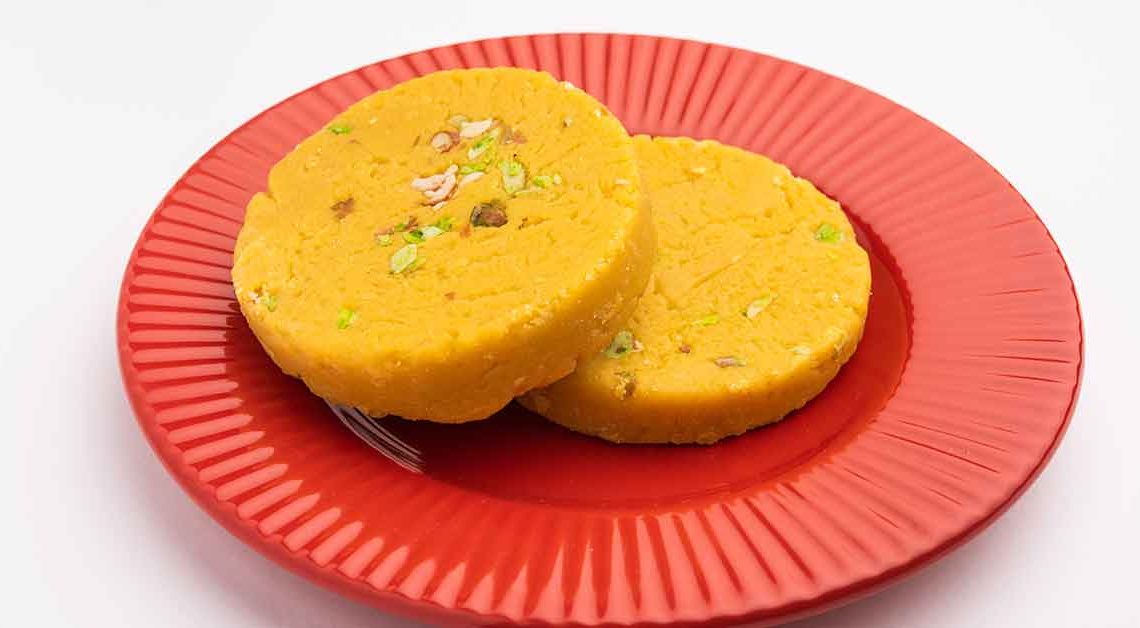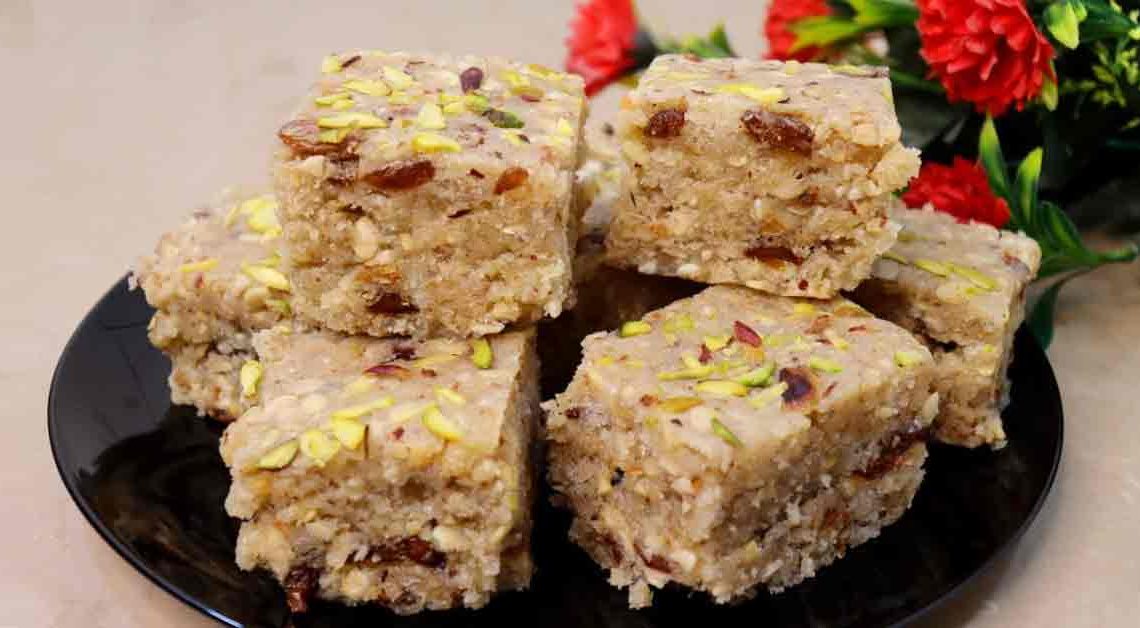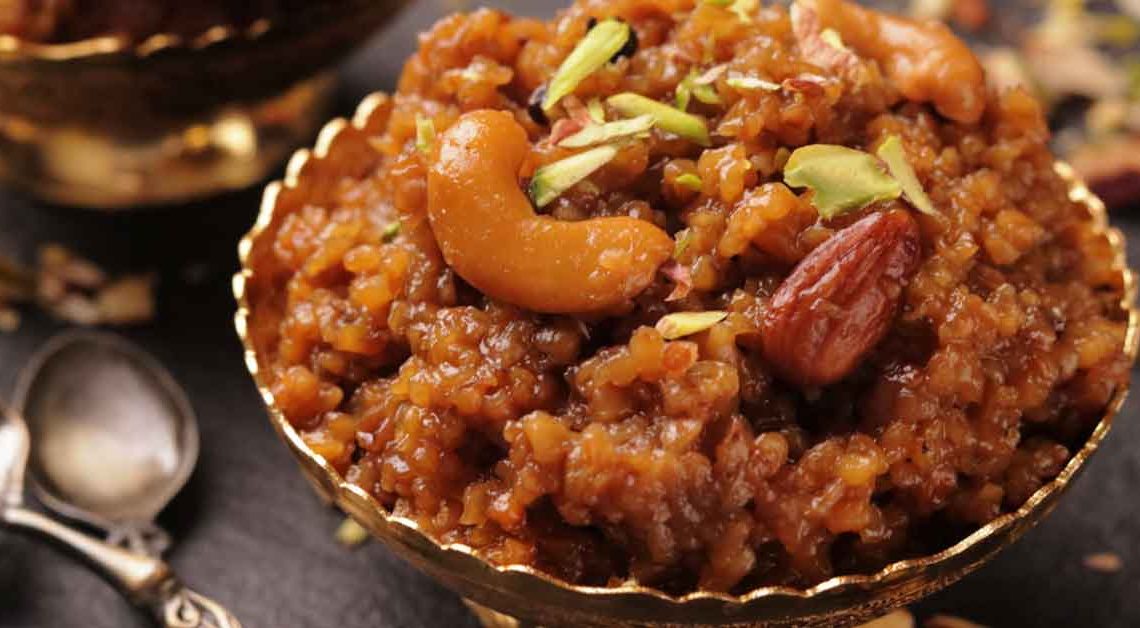Savoring the Magic World of Sohan Halwa

Welcome to Mithainama journey like no other, where tradition meets indulgence, and flavor reigns supreme. Today, we embark on a delightful expedition into the heart of South Asia, to unravel the secrets of a beloved sweet treat that has captured hearts and palates for centuries – Sohan Halwa.
Sohan Halwa, a confectionery masterpiece, is more than just a dessert; it’s a testament to the rich history and culture of the Indian subcontinent. With roots tracing back to the royal kitchens of the Mughals, this sweet delight has evolved into a cherished delicacy enjoyed during festivals, weddings, and celebrations.
Join us as we delve into the fascinating story behind this delectable dessert, exploring its origins, the artistry that goes into its creation, and the diversity of regional variations. From the fragrant saffron-infused halwa of Punjab to the nutty richness of Peshawari Sohan Halwa, we’ll take you on a whirlwind tour of flavors and textures that will leave your taste buds tingling with anticipation.
So, fasten your aprons, sharpen your knives, and prepare to be mesmerized by the irresistible world of Sohan Halwa. Let’s uncover the sweet magic that lies within this iconic dessert together!
Origin of Sohan Halwa
Sohan Halwa, a delectable sweet confection, traces its origins to the rich and diverse culinary heritage of the Indian subcontinent. Its history is steeped in tradition and legends, making it a beloved treat with a story as fascinating as its taste.
It was created in the royal kitchens of the Mughal emperors, who ruled the Indian subcontinent from the 16th to the 19th century. It is believed to have been crafted as a special treat for the royal court, using a blend of indigenous ingredients and Persian culinary influences.
The name is said to be derived from the Persian word “Sohan,” meaning “pleasant” or “delightful,” reflecting the dessert’s exquisite taste and texture.
Over the centuries, it has evolved and adapted to the regional cuisines of South Asia. Different regions, including Punjab, Sindh, and Peshawar, have added their own unique twists to the recipe, resulting in various regional variations of this sweet delicacy.
History of Sohan Halwa
Sohan Halwa, a beloved sweet delicacy with a rich history, is deeply rooted in the culinary traditions of the Indian subcontinent. Its origin can be traced back to the Mughal era, a period of great cultural and culinary innovation in the region.
The story dates back to the royal kitchens of the Mughal emperors who ruled the Indian subcontinent from the early 16th to the mid-19th century. It is believed that Mughal chefs were known for their culinary creativity and experimentation, and they crafted a special treat for the imperial court.
Initially, it was made with a few simple ingredients, including wheat, sugar, ghee (clarified butter), and nuts. Over time, as it gained popularity, regional variations emerged. Different regions across the Indian subcontinent, such as Punjab, Sindh, and Peshawar, added their own unique ingredients and twists to the recipe. For example, some versions include saffron, cardamom, rosewater, or various nuts like almonds and pistachios.
Cultural Significance
Sohan Halwa holds significant cultural importance in the Indian subcontinent and neighboring regions, reflecting its deep roots in the culinary traditions and social fabric of the area. Here are some aspects of its cultural significance:
Festive Celebrations: It is often associated with festive occasions and celebrations. It is commonly prepared and shared during major religious festivals like Eid, Diwali, and Holi, as well as special family events like weddings and birthdays. The presence of dessert at these gatherings symbolizes joy, abundance, and togetherness.
Gift-Giving: It is a popular choice for gift-giving, particularly during festivals and special occasions. It is considered a thoughtful and generous gift, conveying warm wishes and affection. Gifting is a common way to strengthen social bonds and show hospitality.
Regional Identity: Different regions within the Indian subcontinent have their own unique variations of it, each with distinct flavors and preparation methods. These regional variations not only showcase culinary diversity but also contribute to a sense of regional pride and identity.
Where is Sohan Halwa Famous?
It is famous primarily in the Indian subcontinent, particularly in countries such as India and Pakistan. It has strong roots in the culinary traditions of this region and is widely enjoyed and cherished by people of various communities and cultures. Here’s where Sohan Halwa is famous:
India: It is particularly popular in North India, where it is enjoyed as a traditional sweet during festivals like Diwali and Holi. States like Punjab, Uttar Pradesh, and Rajasthan have their own variations of it like badam halwa, sooji halwa. It is commonly prepared and sold in sweet shops and local markets.
Pakistan: It is a beloved sweet treat in Pakistan, enjoyed on various occasions, including Eid and weddings. The city of Multan in Punjab, Pakistan, is especially renowned for its Sohan Halwa, and it’s often referred to as “Multani Halwa.” It’s famous for its unique taste and quality, attracting visitors and customers from all over the country.
Bangladesh: It is also known and enjoyed in Bangladesh, particularly during celebrations and special occasions. It may have variations in flavor and ingredients compared to the Indian and Pakistani versions.
Interesting Facts and Trivia
Sohan Halwa is a delightful sweet treat with a long and rich history. Here are some interesting facts and trivia related to this delectable dessert:
- The city of Multan in Punjab, Pakistan, is renowned for its Sohan Halwa, often referred to as “Multani Sohan Halwa.” It is considered one of the finest and most sought-after varieties of this sweet.
- Traditionally it is labor-intensive to prepare. It involves slow-cooking ingredients like wheat, sugar, ghee (clarified butter), and nuts over a low flame, requiring considerable skill and patience.
- It is a popular choice for gift-giving during festivals, weddings, and special occasions. It is considered a thoughtful and traditional gift, symbolizing good wishes and celebrations.
- It is known for its unique texture, which is both flaky and chewy. It has a rich, sweet, and nutty flavor, often enhanced with aromatic ingredients like cardamom and saffron.
- It finds mentions in various historical texts and accounts, highlighting its significance in the culinary history of the Indian subcontinent.
Did You Know?
Sohan Halwa, in addition to its delightful taste, offers some surprising benefits when consumed in moderation:
- It is a calorie-dense dessert due to its ghee and nut content. It provides a quick energy boost, making it a popular choice for a sweet pick-me-up during the day.
- It contains an array of nuts like almonds and pistachios, which are packed with essential nutrients, including healthy fats, protein, and vitamins, contributing to better overall nutrition.
- Nuts and spices like cardamom used in it have antioxidant properties. Antioxidants help combat harmful free radicals in the body and may contribute to better cellular health.
- The sweetness can trigger the release of serotonin, a neurotransmitter that contributes to feelings of happiness and well-being. Enjoying it in moderation can be a mood-enhancing treat.
- Ghee, a key ingredient in halwa, is believed to aid digestion when consumed in moderate amounts. It can help lubricate the digestive tract and promote smoother digestion.







